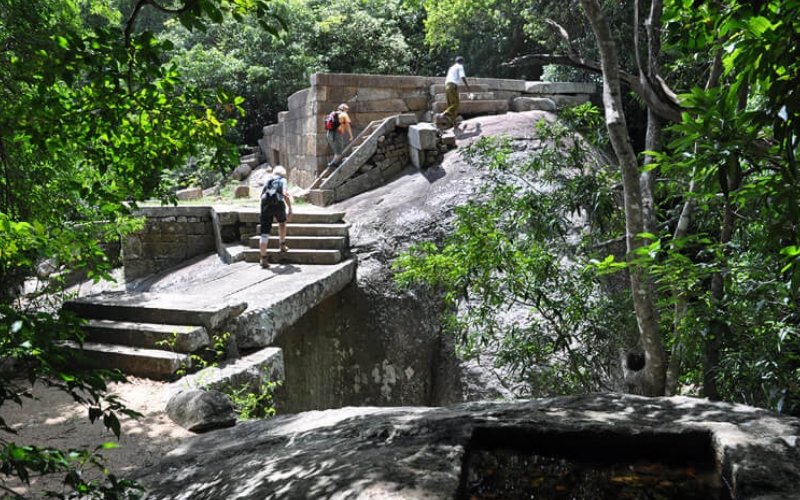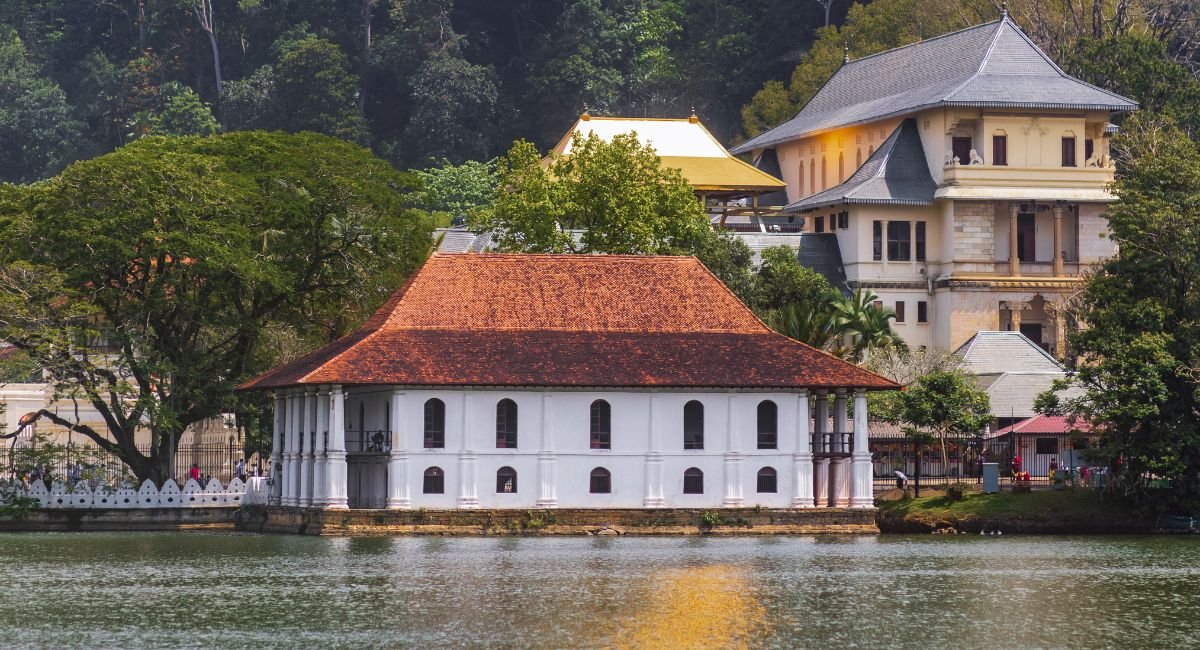History Of Ritigala
Ritigala, an ancient name with deep historical roots, derives its significance from both linguistic and cultural contexts. The term “Ritigala” is believed to have evolved from the word “Aritta,” which holds meaning in Hindi as “Security.” This term was first recorded in the ancient Pali language. The suffix “gala” comes from the Latin word for “rock,” forming the term “Safety Rock” in English—aptly reflecting the structure’s natural, fortified characteristics.
Situated in Sri Lanka’s North Central Province, Ritigala lies between the ancient cities of Anuradhapura and Polonnaruwa. The distance from Anuradhapura to Ritigala is 43 kilometers, while Polonnaruwa is 49 kilometers away. The Habarana-Maradankadawala route provides the most accessible path to Ritigala, with Habarana being the closest major town, just 12 kilometers away. The route also leads to the settlement of Ganewalpola.
Ritigala is home to 70 discovered rock caverns, offering a glimpse into its monastic past. Historically, Ritigala was known as AittaPabbatha, and it served as a sanctuary during King Dewanampiyathissa’s reign, where a monk, later known as Arahath, spent his monastic life. Ritigala has also played a significant role as a royal refuge, particularly during the 7th-century conflicts with Dravidian merchants and battles involving King Dutugemunu and Jetta Tissa.
Located in the North Central Province, Ritigala is sandwiched between the ancient cities of Anuradhapura and Polonnaruwa. The mountain contains 70 rock caverns, all of which have been discovered. It has served as a king’s refuge numerous times, including during the 7th-century fight against Dravidian merchants.
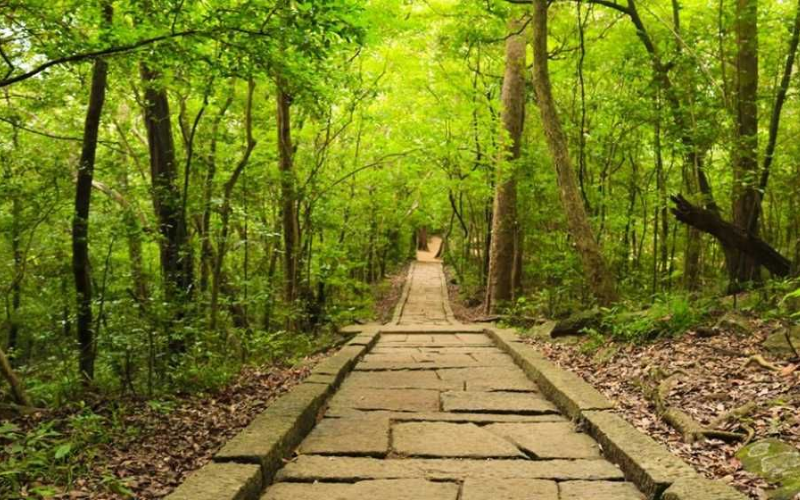
Rock Inspection
The rock inscription reveals that early Sri Lankan Buddhist monks lived in natural caves or rock shelters, such as those found in Ritigala. The caverns at Ritigala are remnants of a monastery where the Pansukulikas Monks once resided.
Due to this historical context, no temples, image houses, or stupas are visible at Ritigala today. However, after a short hike up the mountain, visitors can view the ruins of the monastery. An inscription uncovered at the site credits King Lanji Tissa with the discovery of Ritigala Monastery.
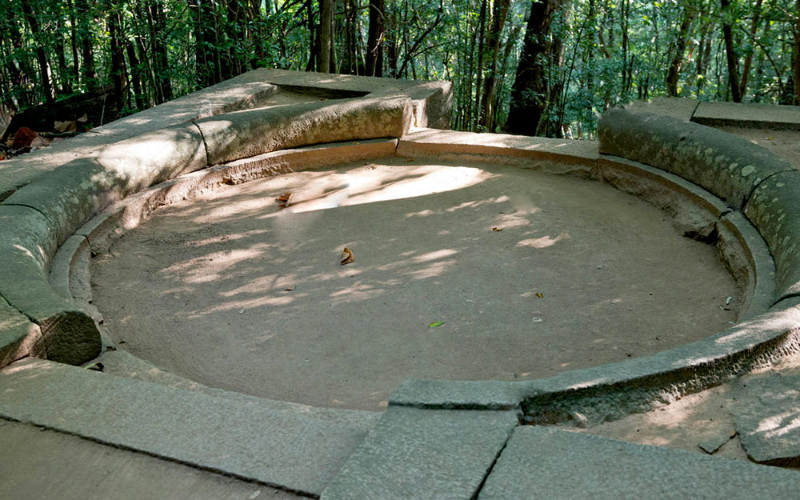
Location Briefing
The rock inscription reveals that early Sri Lankan Buddhist monks lived in natural caves or rock shelters, such as those found in Ritigala. The caverns at Ritigala are remnants of a monastery where the Pansukulikas Monks once resided.
Due to this historical context, no temples, image houses, or stupas are visible at Ritigala today. However, after a short hike up the mountain, visitors can view the ruins of the monastery. An inscription uncovered at the site credits King Lanji Tissa with the discovery of Ritigala Monastery.
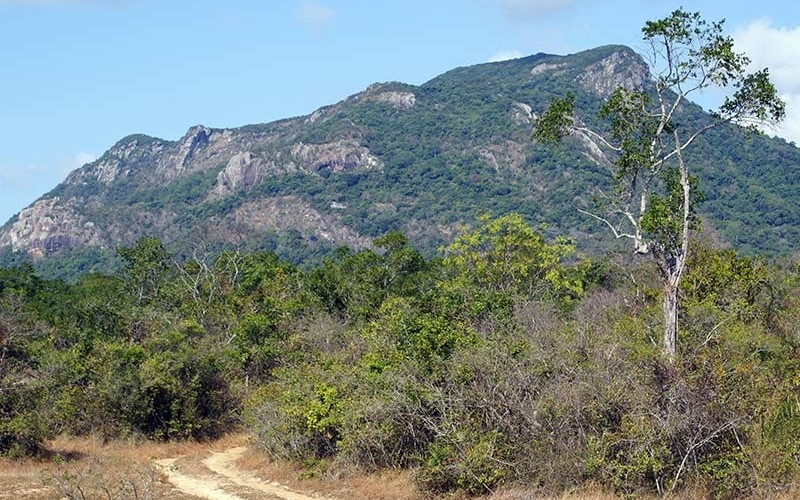
Wildlife & Biodiversity at Ritigala
Ritigala is a thriving wildlife sanctuary, home to a rich diversity of species, including wild elephants, leopards, and bears, which roam the dense jungle. The region experiences the most rainfall during the North East Monsoon, and the jungle serves as the watershed for the Malwathuoya River.
The area boasts a remarkable variety of flora and biodiversity, surpassing that typically found in the central hills of Sri Lanka’s wet zone. Some of the plant species are endangered or endemic, while others are rare and unusual. Wild orchids flourish in abundance at the upper reaches of the mountain, contributing to the region’s unique ecological makeup.
Ritigala is recognized as a biodiversity hotspot, especially during the dry season, and is managed collaboratively by the Department of Wildlife and the Forest Department of Sri Lanka. The mountain range is home to endemic bird species such as the Black Eagle, Grey Hornbills, Sri Lanka Spur Fowl, Malabar Pied Hornbill, and Spot-Winged Thrush, among others.
Ritigala’s mountain range features three distinct types of forest: the Dry Mix Evergreen Forest at the lower levels, the Tropical Mountain Forest in the middle, and the Upper Mountain Forest at the highest elevations. As the highest mountain range in Sri Lanka’s North Central dry plain, Ritigala spans three miles in length and two miles in width, with four peaks. This diverse ecosystem supports a greater variety of unusual flora and fauna, particularly during the dry season.
Facts about Ritigala
📙The History of Ritigala:
The ruins of Ritigala date back to the ancient kingdom of Anuradhapura, established in the 4th century BCE. Initially a Buddhist monastery, its secluded and serene location made it an ideal setting for meditation and spiritual reflection. The site features the remnants of a hospital, library, pond complex, and an intricate network of paths and stairways that lead to the mountain’s summit, offering a glimpse into its historical significance.
📙The Unique Features of Ritigala:
Ritigala stands out from other ancient Sri Lankan ruins due to its distinctive topography and natural beauty. The mountain range is enveloped by dense forests, home to a wide range of flora and fauna, including endemic species. The ruins are nestled among towering boulders, creating an air of mystery and intrigue. The architecture at Ritigala is a fascinating blend of Buddhist and pre-Buddhist elements, adding to its unique charm and making it a compelling site to explore.
📙The Cultural Significance of Ritigala:
Ritigala holds immense cultural and religious value for the people of Sri Lanka. The site is considered sacred, with a belief that the renowned Buddhist monk, Arahath Mahinda, visited and established a monastery there. Ritigala is a popular pilgrimage destination, drawing large numbers of visitors, especially during religious festivals, who come to honor its sacred heritage.
📙Visiting Ritigala:
Ritigala is a must-visit destination for both history and nature enthusiasts. Easily accessible by road from Habarana, which is about 40 kilometers away, the site offers a combination of rich history and natural beauty. For an in-depth experience, guided tours are available to help visitors understand the significance of the ruins. It’s recommended to wear comfortable walking shoes, and bring water and sunscreen, as the trek to the summit can be physically demanding, particularly during the hot, humid months.
📙How to Reach Ritigala:
Located in Sri Lanka’s North Central Province, Ritigala is easily accessible from Habarana, about 40 kilometers away. Here are some travel options:
- By Car or Tuk-Tuk: The most convenient way to reach Ritigala is by hiring a car or tuk-tuk from Habarana. The journey takes approximately 30-40 minutes, and the road is well-maintained. Negotiating the fare in advance is recommended.
- By Bus: For a budget-friendly option, take a bus from Habarana to Maradankadawala village, then a tuk-tuk to Ritigala. The bus ride takes around 45-60 minutes, followed by a 20-30 minute tuk-tuk ride.
- By Foot: For the adventurous, you can hike to Ritigala from Habarana along a scenic trail. The hike lasts about 4-5 hours, providing stunning views of the countryside and forest along the way.
Conclusion
Ritigala is a unique and fascinating site that showcases the rich cultural heritage and natural beauty of Sri Lanka. Its ancient ruins, lush forests, and stunning topography make it a must-visit destination for travelers who seek adventure and exploration. Whether you are a history buff, a nature lover, or a spiritual seeker, Ritigala has something to offer everyone.
Beat Tours near Ritigala
Discover the best tours in Sri Lanka, where every journey unveils a new wonder. Explore ancient ruins, lush tea plantations, golden beaches, and vibrant wildlife. Experience the magic of this tropical paradise like never before!
Best Hotels near Ritigala
Experience luxury and comfort at the best hotels in Sri Lanka. From serene beachfront resorts to charming hill-country retreats, enjoy world-class hospitality, stunning views, and unforgettable stays tailored to your every need.


